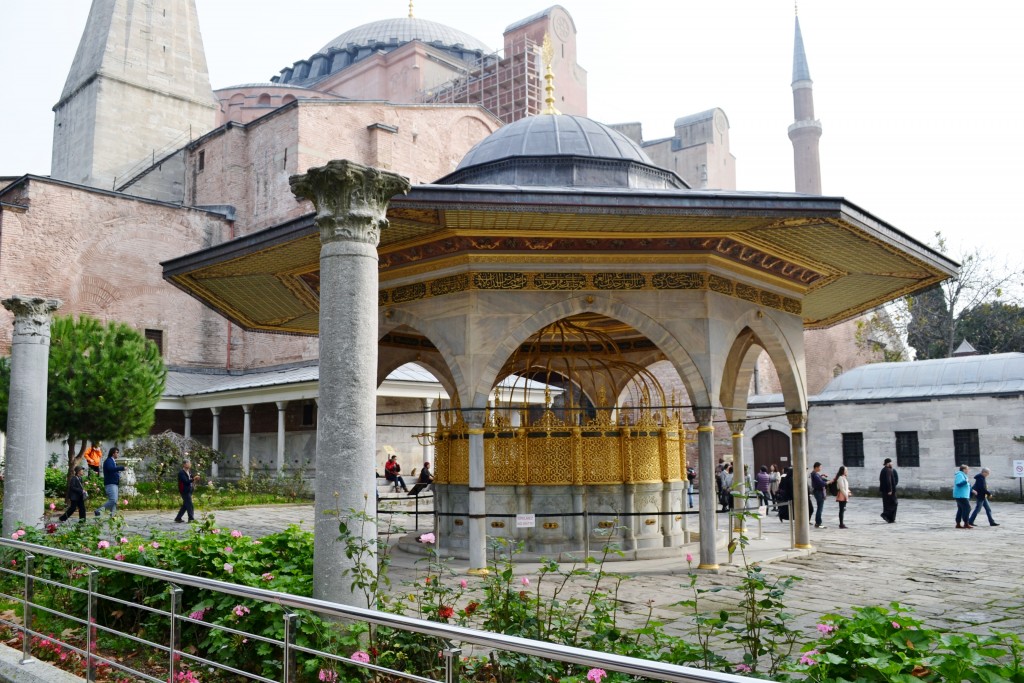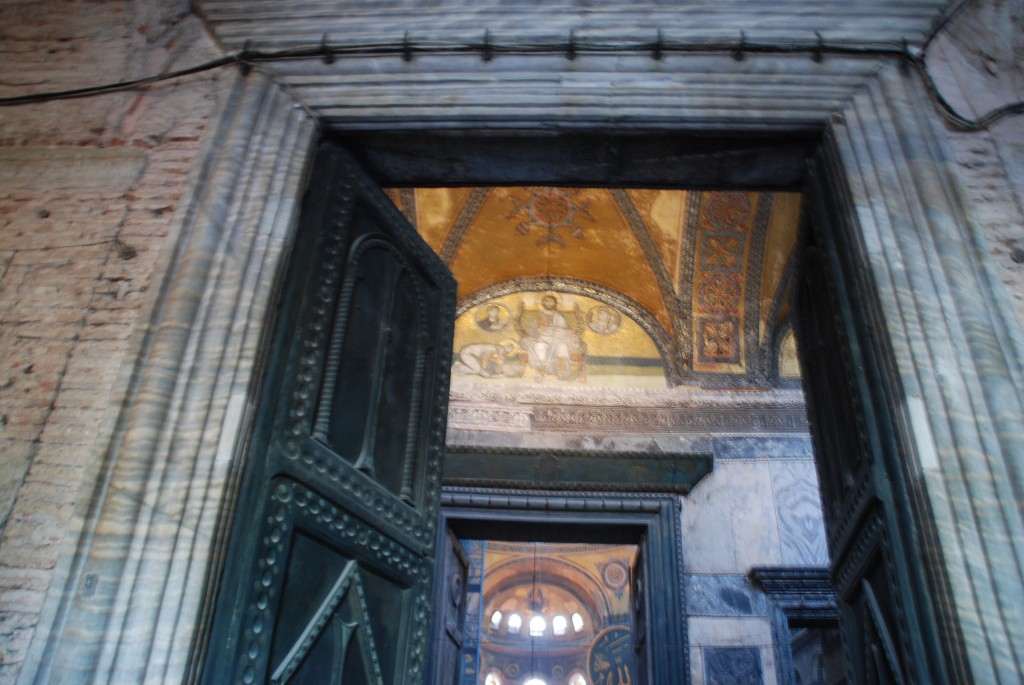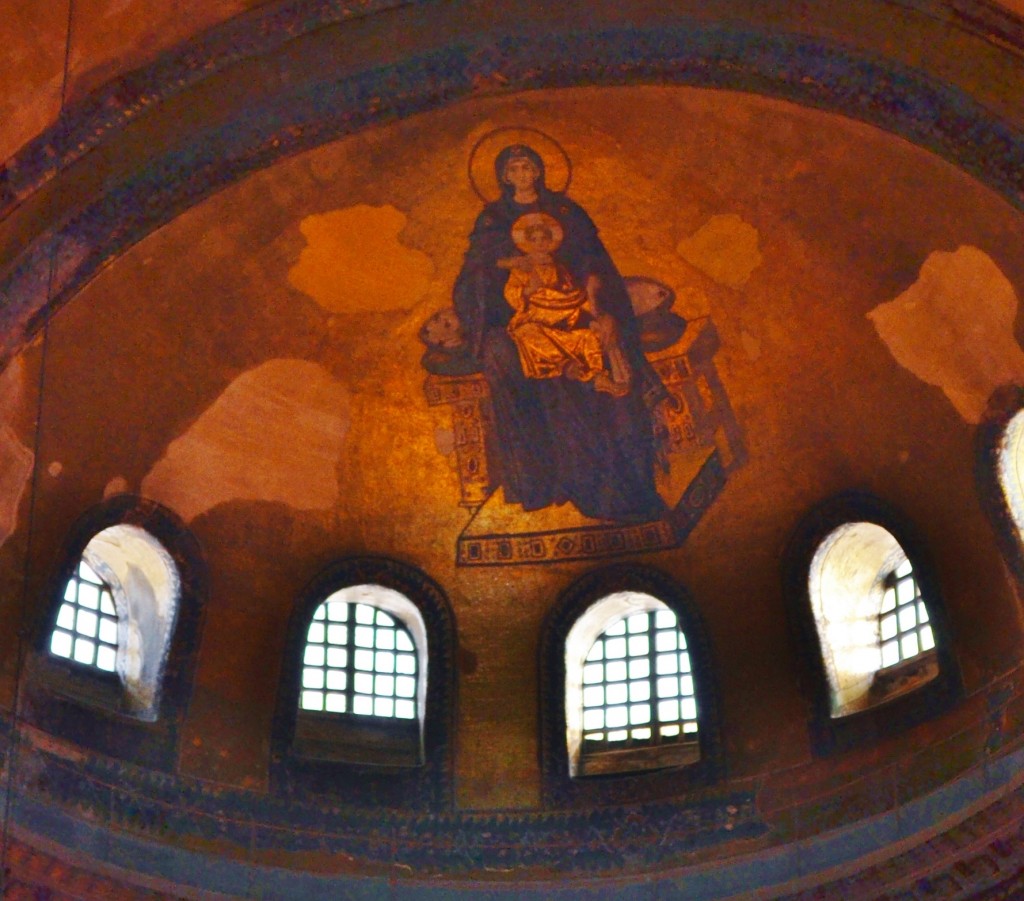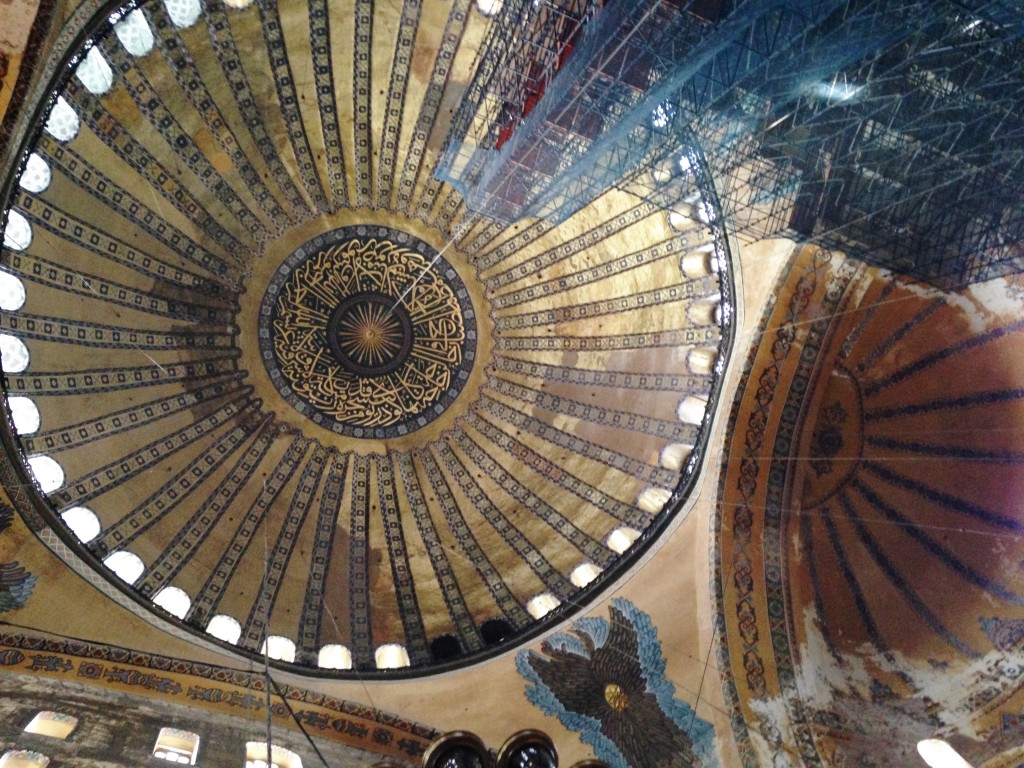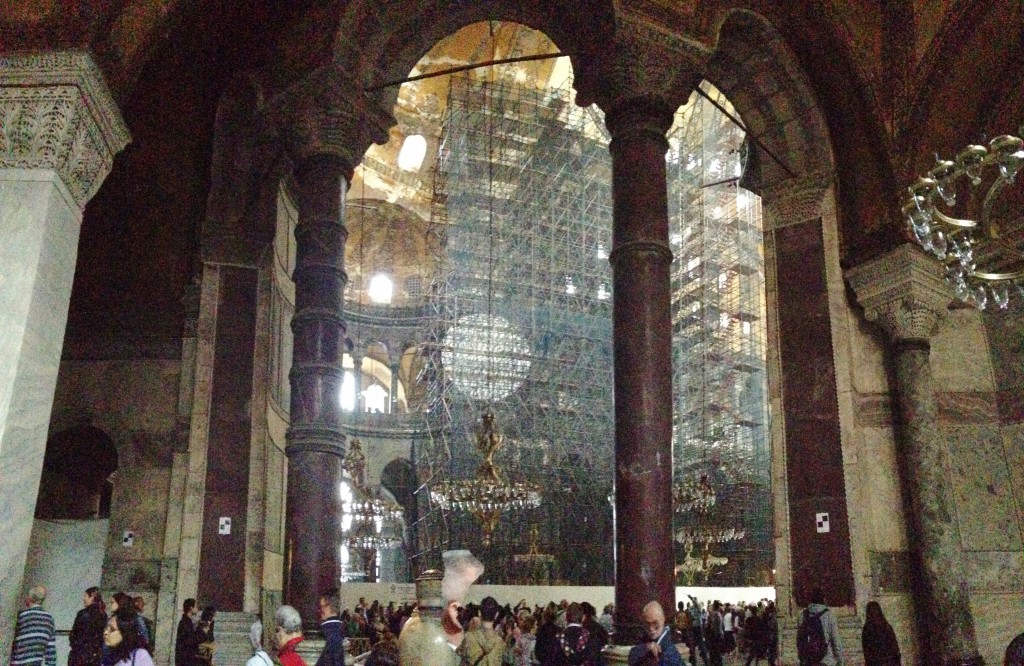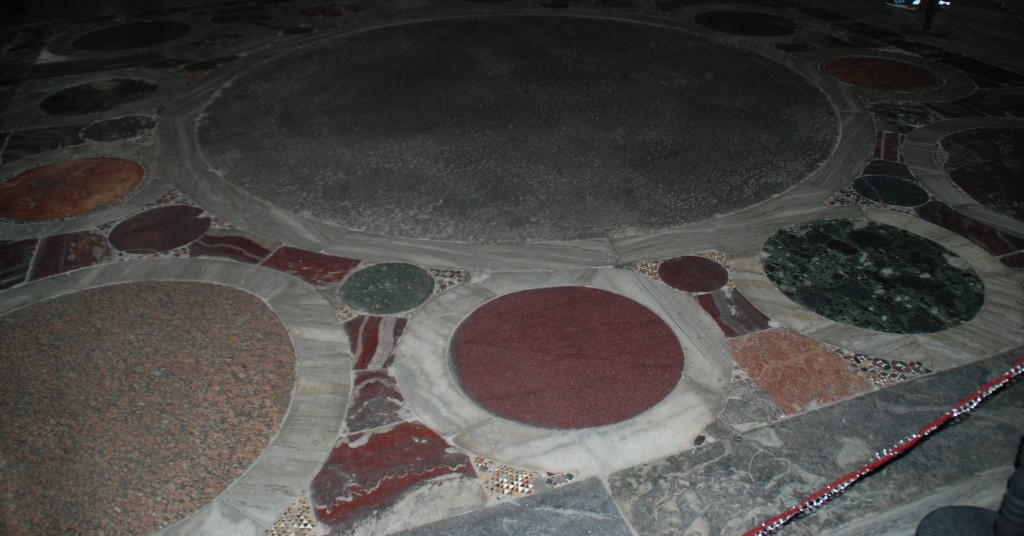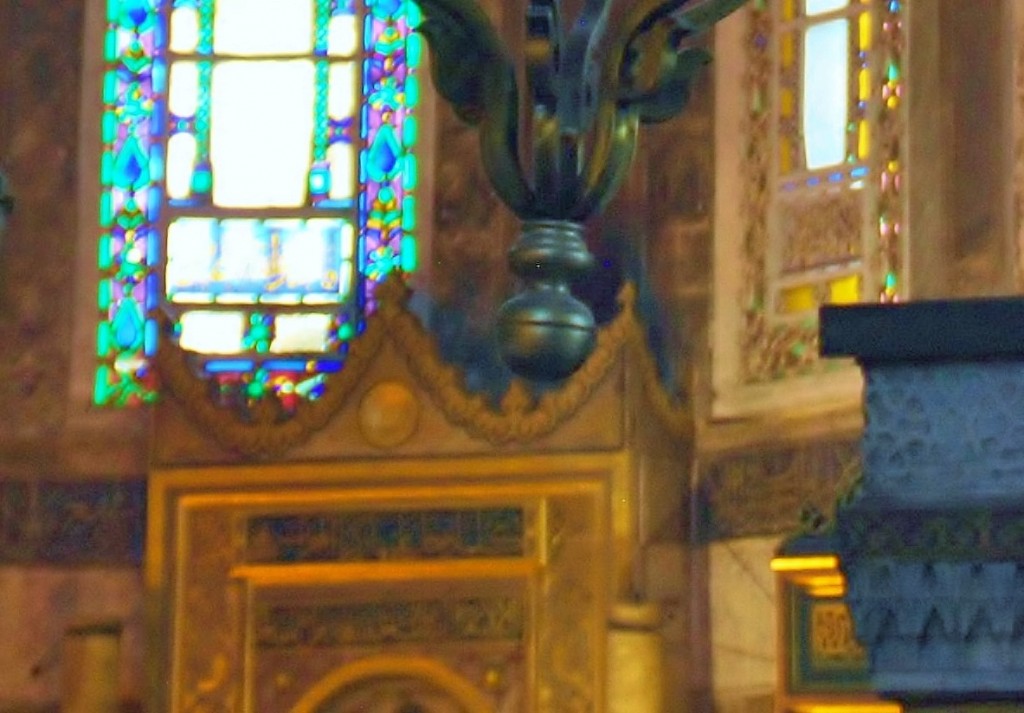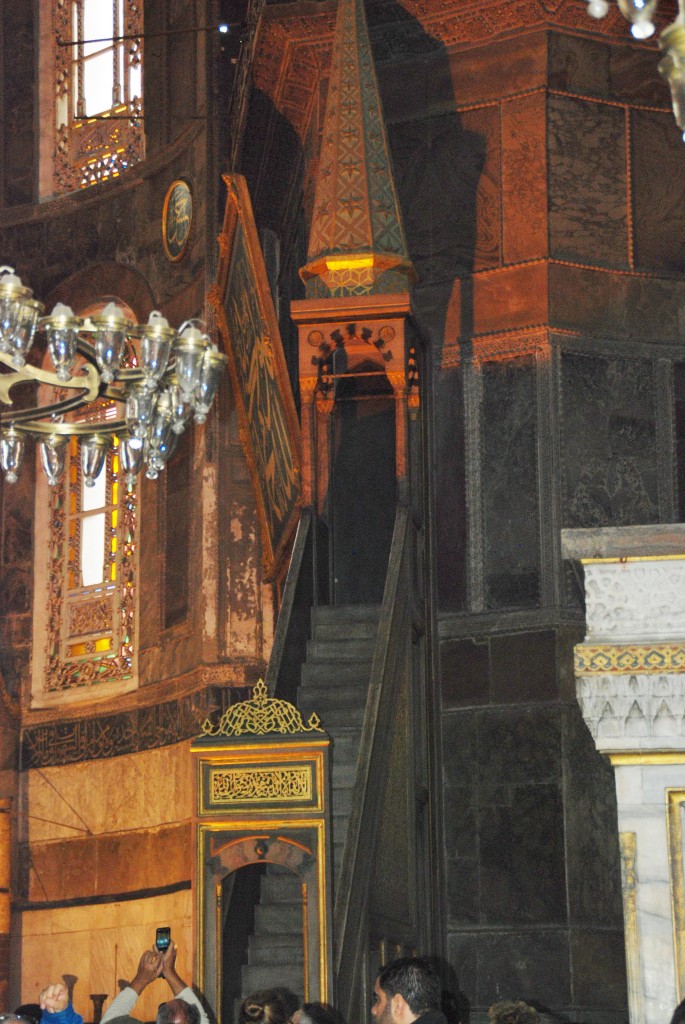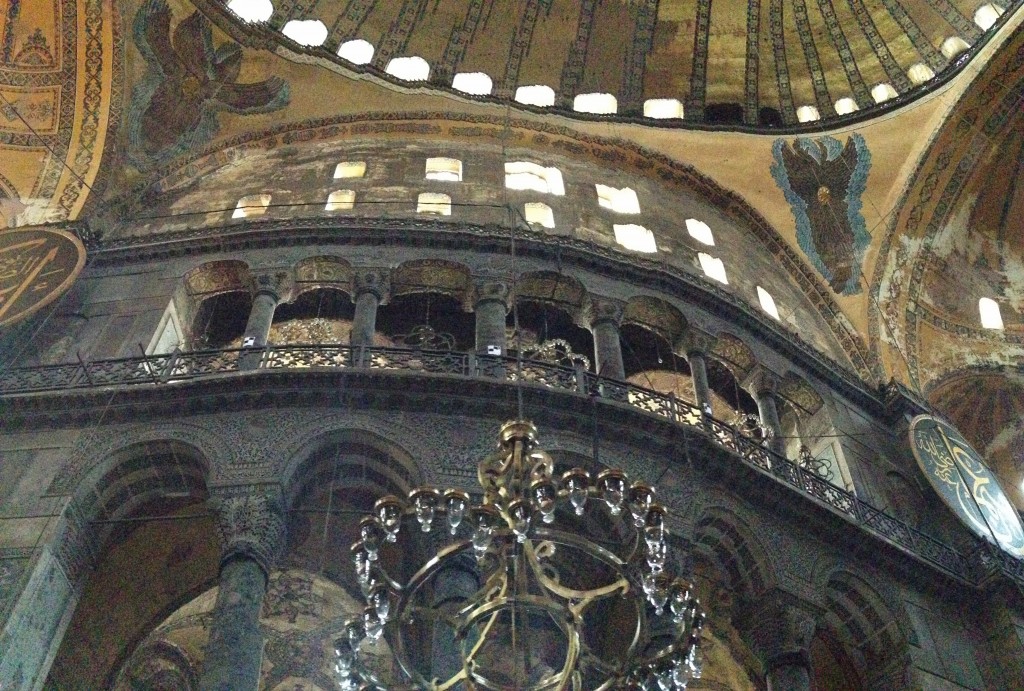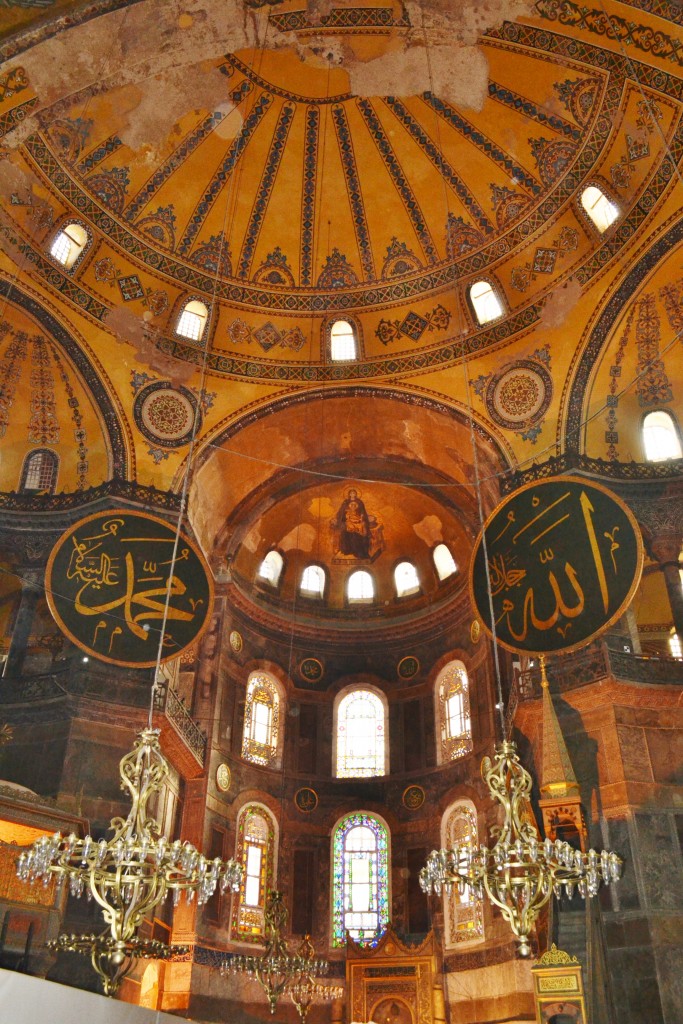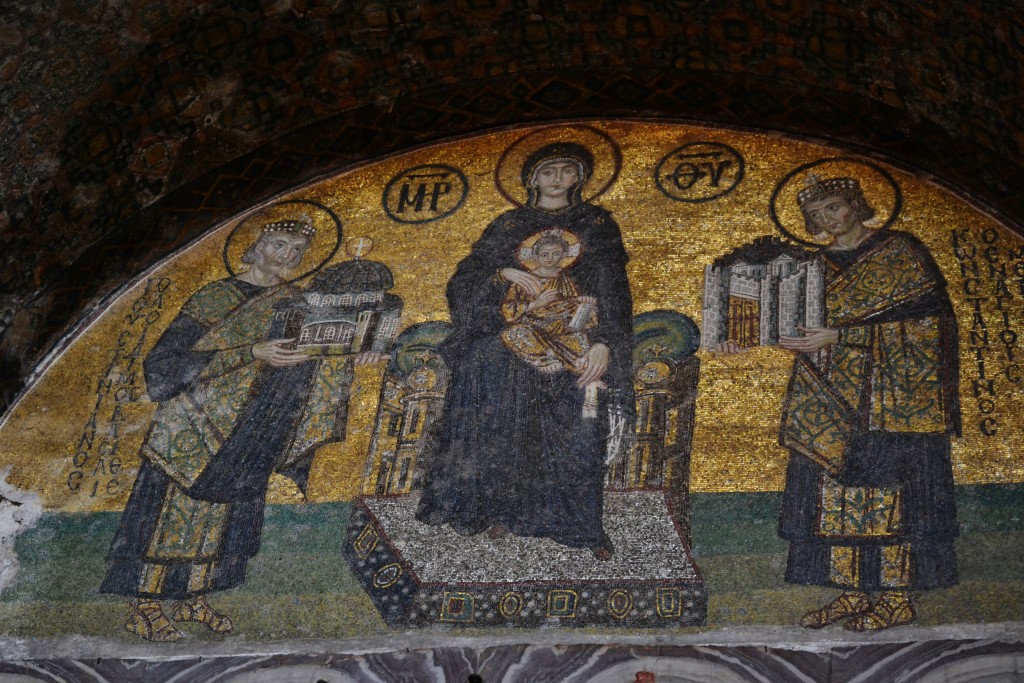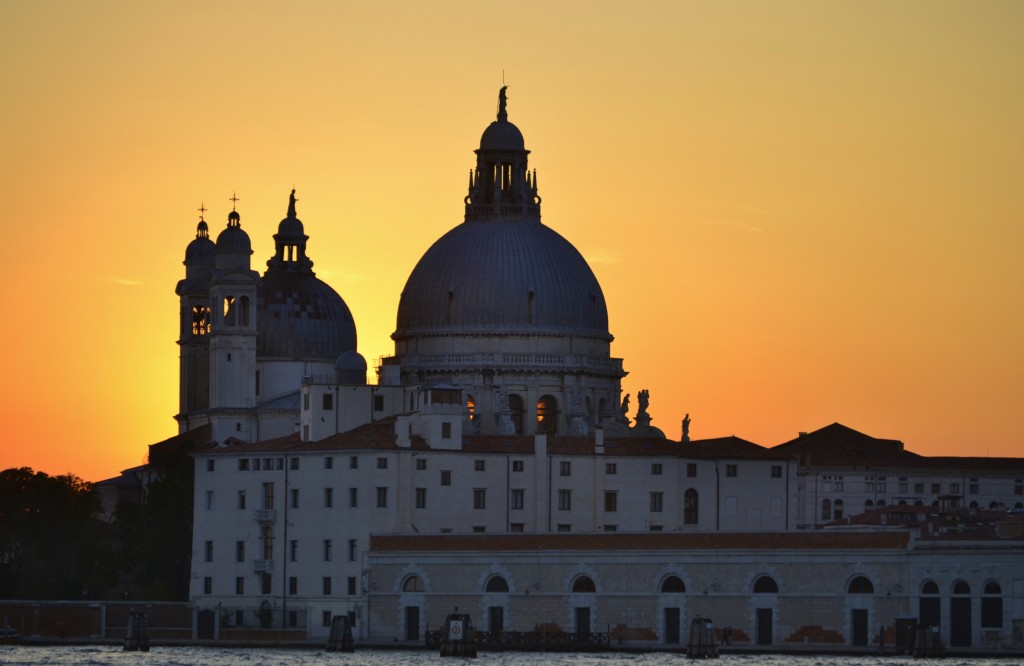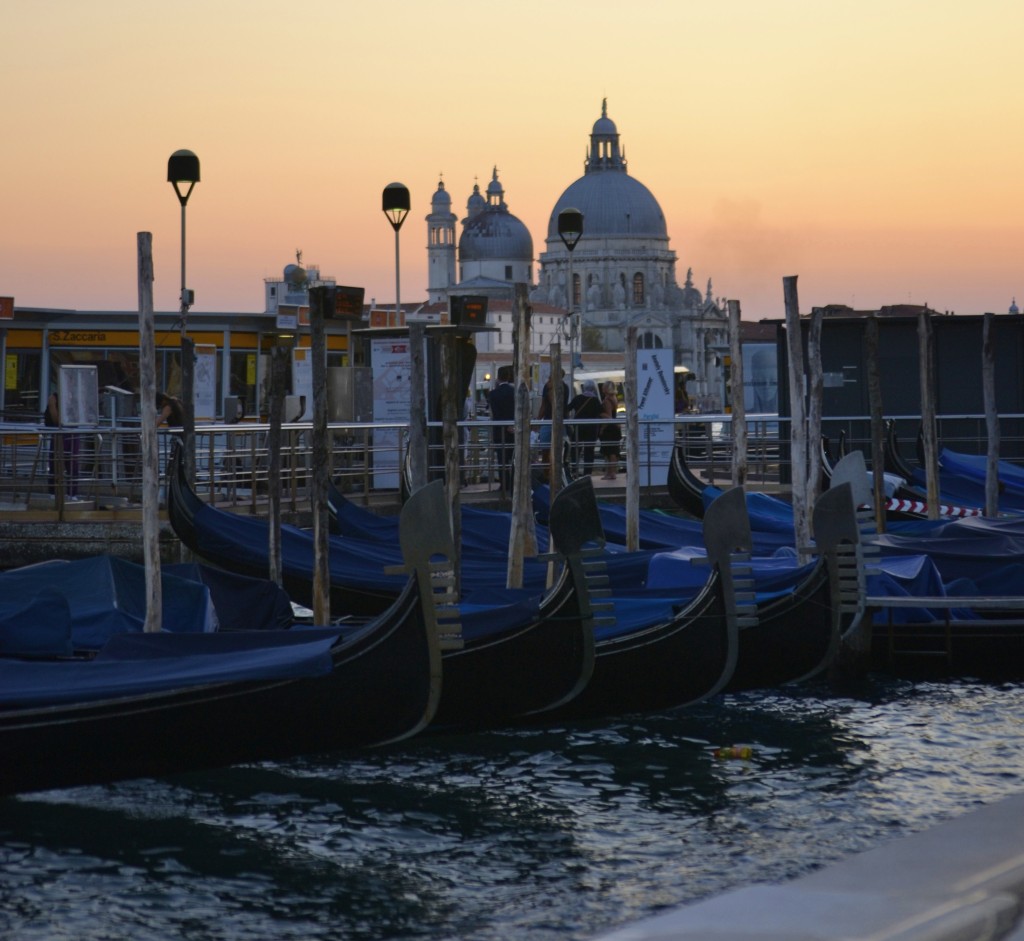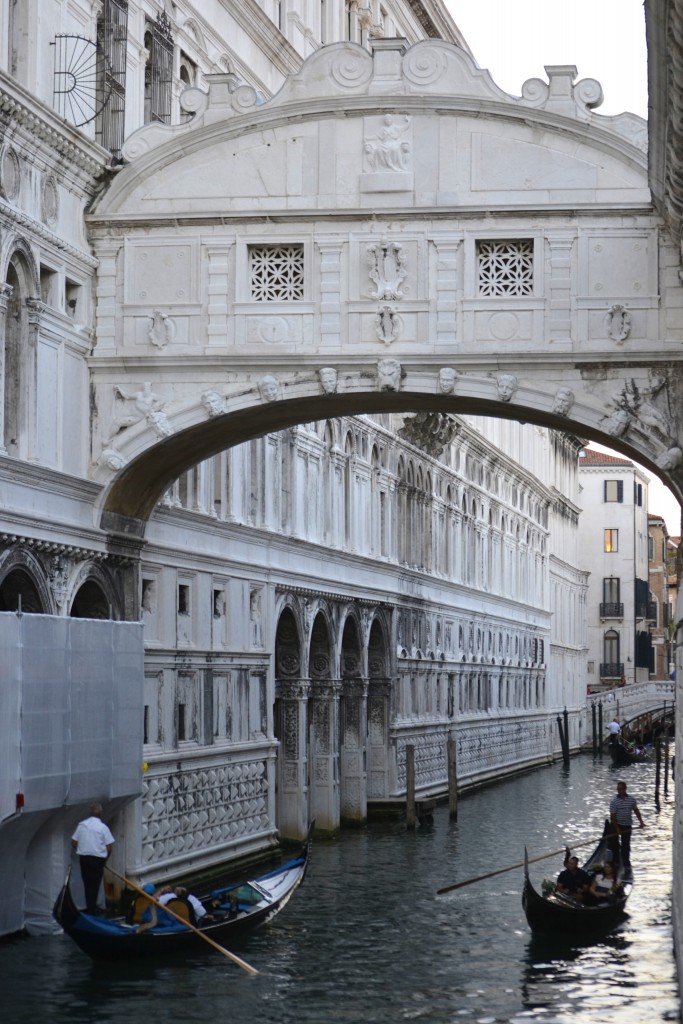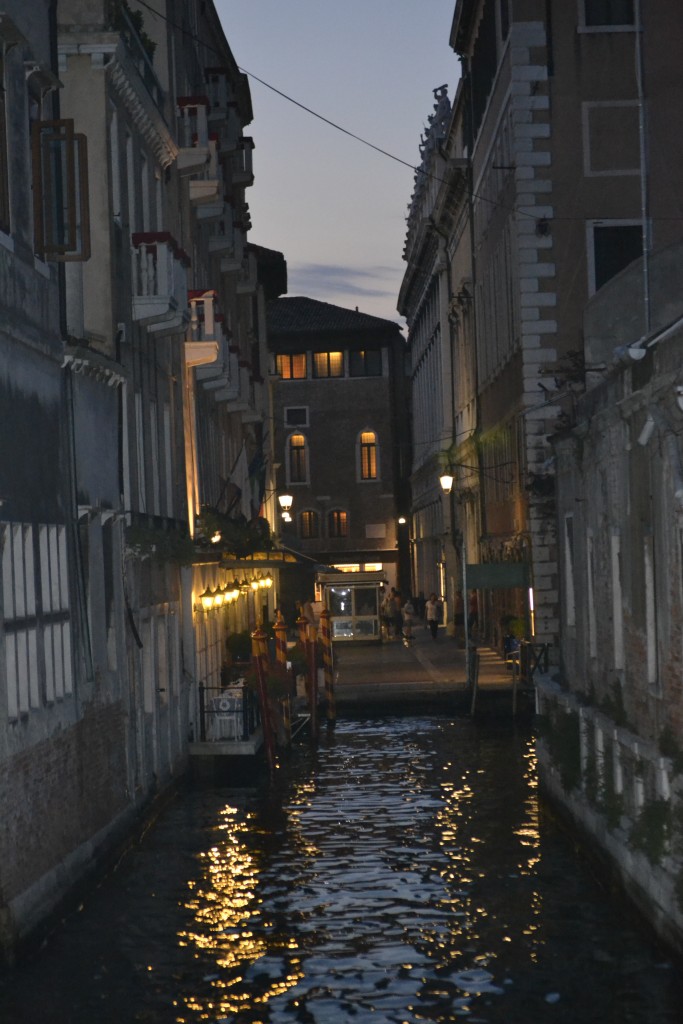My first visit to Istanbul was on a summer girl’s trip. Our plans were to start out in Istanbul, Turkey, explore the beautiful coast and sail to a few of the nearby Greek islands. With only a couple of days in the capitol city, I was disappointed that we had such little time to visit more of Istanbul’s historical sites. I remember how fascinated I was to see the mosques, the Hippodrome and the Bosporus River all the while watching the city celebrate the Ramadan holiday.
A couple of years later, I returned to Istanbul on a Footsteps of Paul cruise and I was thrilled to be back for two full days in the city. Happy to visit the Blue Mosque and the Spice Market, our first stop was the Hagia Sophia.
The Hagia Sophia (eye-ah soh-fee-yah) has been described as one of the greatest sites of worship for both Christians and Muslims. Initially built by Emperor Constantine in 537AD as a Christian church, the site was later converted into a mosque when Islam became the country’s central religion. I imagine all of the thousands of Christians arriving to the Hagia Sophia to worship in such a beautiful place. Considered one of Istanbul’s most impressive attractions, nearly three and a half million guests visit this historical site which is now an educational museum.
Upon entering, all guests are required to remove their shoes and the women must cover their hair. We approached the Hagia Sophia through the vestibule on the western side where we were then led into the open expanse of the former church. The central bronze doors were brought to the site from an ancient temple in Antioch. Known as the Emperor’s entrance on special occasions, the spectacular mosaics decorated the transom dating over 1500 years to the time of Justinian.
Measuring nearly 250 feet long, 230 feet wide and towering 90 feet high, this space is exceptionally large. Its architecture is influenced by both the Byzantine and Ottoman empires. An outer narthex leads into the inner narthex (a porch area of the church) and finally reaches the nave in the center, where the congregation would have met.
The half domes display colorful mosaics of Mary holding the infant Jesus which were later concealed when the church became a mosque. Once the facility became a museum, the images were discovered during a restoration project and ongoing renovations continue to uncover extraordinary artwork.
The impressive dome is held up by its walls and arches that strategically distribute the weight of the dome to create a pendentive. Reaching a height of 185 feet and measuring 100 feet across in diameter, there are 40 ribs made from bricks of clay imported from the Greek island of Rhodes.
When the Hagia Sophia was built, it was constructed with the finest materials that were imported from all over the ancient world. The large green column was removed from the Temple of Artemis in Ephesus as a spoil of conquest (spolia). The two alabaster urns are from the Hellenistic Era of Pergamon and the purple columns behind each urn are older than the Hagia Sophia itself.
The panel on the walls and the inlay on the floor are a collection of purple porphery from Egypt, green stone from Thessaly, black stone from the Bosporus, yellow stone from Syria, white stone from Cappadoccia and golden stone from Libya. The green marble circle, called the Omphalion, was the spot where the emperors were crowned.
Within the Hagia Sophia are a few Muslim elements that remain on display. The mirhab, known as the prayer niche, oriented the Muslim’s direction so that he could position himself to pray towards Mecca.
The Mimbar (meem-behr) is the raised pulpit in a mosque where the imam would stand halfway up the stairs to deliver his sermon.
The upper galleries with their arched open spaces are accessible by a ramp near the Narthax. This second level was designated for women who came to the mosque to worship and we learned from our guide that there are beautiful mosaics on display.
When the church became a mosque, many of the mosaics and frescoes depicting people were covered as required by the Islam religion. While the building was undergoing restoration, seraphims in the upper corners were recently unveiled. It was estimated that they had been painted in the 14th century AD.
There are a total of eight medallions suspended from the arches overheard. The Arabic writing documents the names of leading Muslim figures, as images of people were forbidden to be displayed in a mosque.
As I exited the Hagia Sophia, I noticed the reflection of the Donation Mosaic in the mirror above. The mosaic is on the opposite side of the wall where Mary is holding Jesus in her lap. Jesus makes the sign of the trinity with his three fingers of his right hand and holds the Gospels of the Bible in his right hand. Two men stand beside the Virgin Mary and Jesus, with arms outstretched offering them gifts. On the right is Constantine presenting them a model of the city of Constantinople and on the left is Justinian gifting them the Hagia Sophia, Our guide pointed out that the Hagia Sophia was painted as it would have looked when it was a church without the minorets and a cross at the top of its dome. This 11th century mosaic dates back to the reign of Basil II, an emperor of the Byzantine Empire.
What amazed me about the Hagia Sophia was seeing the combination of Christianity and Islam in one location. I was also intrigued by the recent findings and the uncovering of Christian artwork that had been hidden for so many years. Researchers are optimistic that they may find more of these extraordinary treasures and It will be interesting to learn what they will discover.
What was your experience like at the Hagia Sophia? What were some of the aspects of the museum that interested you? I would love to hear about your visit if you would kindly leave a message in the comments section below. Wishing you many Happy Travels!
Disclosure: Please refer to our blog disclaimer tab for more information.
What to See and What to Do:
Hagia Sophia
Sultan Ahmet Mahallesi
Ayasofya Meydani
34122 Fatih/Istanbul, Turkey
Telephone: +90 212 522 17 50
- Admission Fee: 60 Turkish Lira
- Hours: The museum is open April 15 – October 31 from 9AM to 7PM, with the last entry at 6PM; November 1 – April 15 from 9AM to 5PM, with the last entry at 4PM. They are closed on Mondays. Last tickets are sold an hour before closing.
- Amenities: Audio guide (30 TL) can be accessed at the museum’s entrance provided in the following languages: Turkish, English, French, German, Italian, Spanish, Arabic, Japanese, Persian, Greek, Russian and Korean
- Scenic View: Splendid views of the museum from the upstairs gallery
- Length of Visit: 1 – 2 hours
- Tips for Your Visit: The Hagia Sophia is located in the Sultanahmet District across from the Blue Mosque. Arrive early in the day as crowds to purchase tickets can be long. Dress appropriately as you may be turned away for not covering your knees and shoulders. In addition, there are several ways to purchase tickets ahead of time, which will allow you to skip the ticket queue. According to tradition, if you “turn your thumb” in the historical pillar, all of your wishes will be granted. Gil is the name of the resident cat who lives within the museum. Private tours can also be purchased at the door. Don’t forget to visit the upstairs gallery for additional displays.
Where to Stay:
Fer Hotel
Mollafenari Mahallesi
Turbedar Sk. No. 12
34120 Fatih/Istanbul, Turkey
Telephone: +90 212 522 50 80
Where to Eat:
Cozy Pub & Restaurant
Alemdar Mh., Divan Yolu Cd. No. 60
34110 Fatih/Istanbul, Turkey
Telephone: +90 212 520 09 90
We loved sitting in the alleyway at red and white checked clothed tables. We ordered Efes beer and appetizers which included hummus, tzatziki sauce, pita bread and spring rolls. Ask your server to let you go up the small elevator for an amazing view of the Blue Mosque!
What to Eat:
- Baklava: made with puffed pastry, this dessert has chopped nuts (my favorite is pistachio), and is covered in honey.
- Gozleme is a type of bread that is shaped in a square and stuffed with various fillings such as meat, cheese, potatoes or vegetables and then cooked over a griddle. The cheese and spinach reminds me of spanikopita.
- Iskender Kebab: thinly sliced lamb is smothered in tomato sauce and served with traditional bread, then topped with yogurt and butter.
- Mezze is a sample of several small bites that may include yogurt with herbs, hummus, olives, dolmas (stuffed grape leaves), meatballs, eggplant, white cheese and warm bread.
- Simit is a fun street food bread that is similar to a pretzel.
-
Tarihi Osmanli Macunu (Traditional Ottoman Candy): Made of five different flavors of thick taffy spiraled deftly around a stick and then sprinkled with fresh lemon juice, creating a delicious and savory lollipop.
- Turkish Apple Tea is absolutely amazing and was one of my favorite drinks while visiting Turkey.
- Turkish Delight: a delicious dessert is made up of dates, pistachios, hazelnuts, which is pink in color.
- Turkish Ice Cream, also known as Dondurma, is a little thicker in consistency, but it will not melt. A must try.
- Turkish Pizza is outstanding and tastes so fresh. Made from Turkish Pide (a type of pastry), it is similar to a flatbread with a variety of toppings.
- Turkish Ravioli: dumplings stuffed with beef or lamb served with yogurt.
What to Read:
- Istanbul: Memories of a City, by Orhan Pamuk
- The Bastard of Istanbul, by Elif Shahak
- My Name is Red, by Orhan Pamuk
- Istanbul Passage, by Joseph Kanon
Photo Guide for Istanbul:
- Galata Tower for views of Istanbul and the Bosphorus River
- The Blue Mosque for its amazing blue tiles
- The Rainbow Stairs at Sali Pazari Yokusu
- The Rooftop Terrace of Seven Hills Hotel for views of the Blue Mosque, Topkapi Palace AND the Hagia Sophia
- Rooftop Terrace of Cozy’s Restaurant for views of the Blue Mosque
- Inside the Hagia Sophia in the afternoon when the light shines in from the windows
- The Grand Bazaar
- Balat for colorful structures in the former Jewish neighborhood
For more information about the beautiful, exotic country of Turkey, check out the following links!
Topkapki Palace
The Blue Mosque
Spice Bazaar and Hippodrome
Ephesus, Turkey: A Journey Back in Time
A Turkish Carpet Demonstration
Kusadasi and its Symbol of Peace
The Theater of Miletus
The Baths of Miletus
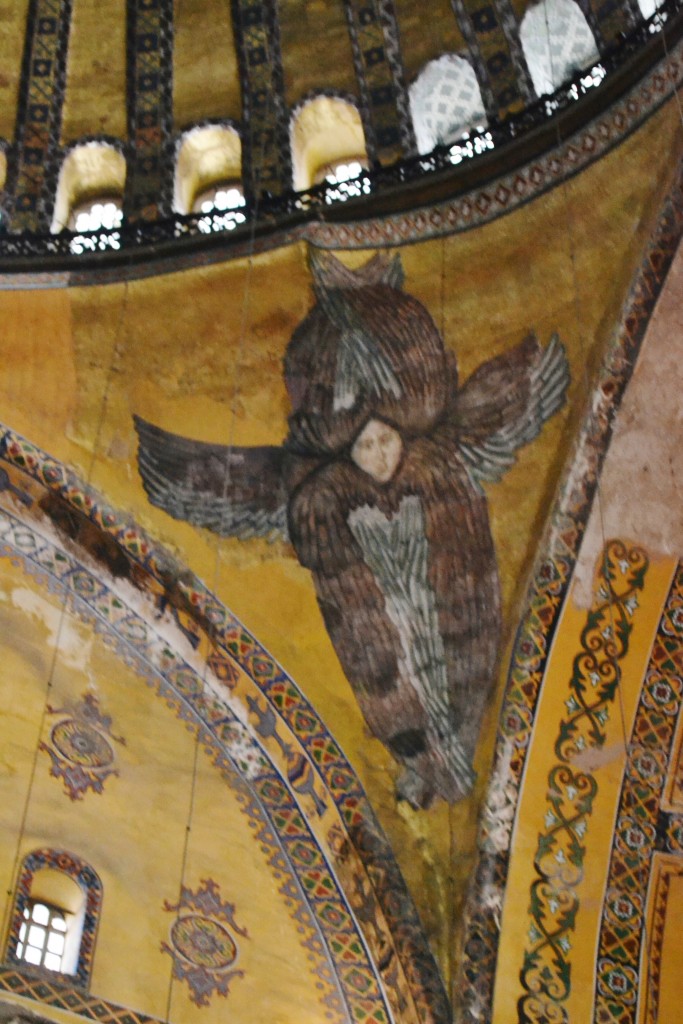
A Seraphim that was uncovered in 2010
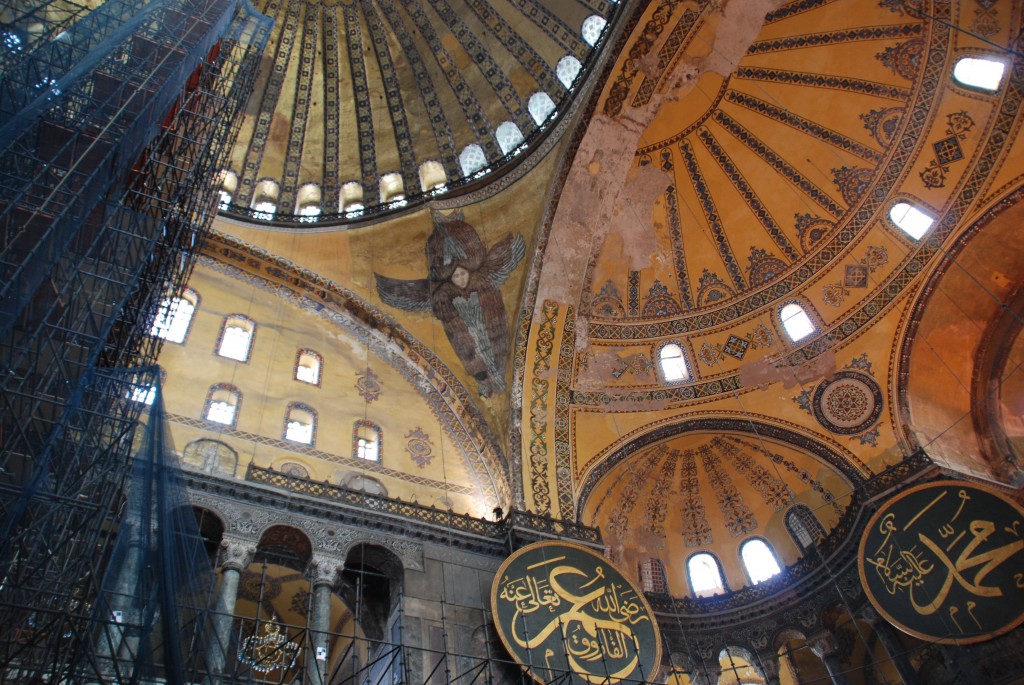
The Dome, the Seraphim, the Medallions and the Scaffolding
